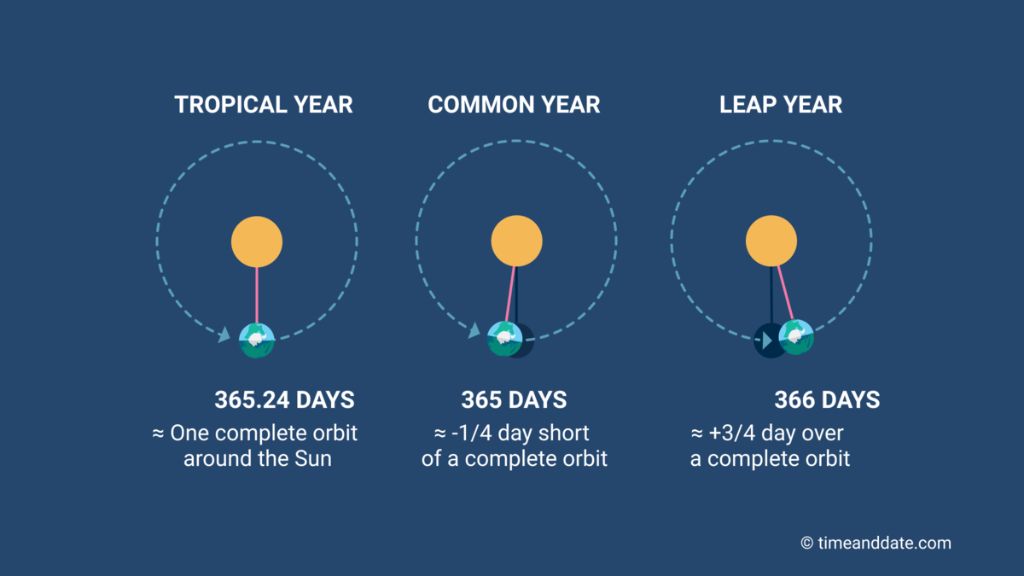How Long Is One Solar?
What is a Solar?

A solar is a unit of time measurement based on the length of a year on a planet or other celestial body. Specifically, a solar refers to the time it takes for a planet to complete one revolution around its star. For example, on Earth a solar is equivalent to one year, or the time it takes for the Earth to orbit the Sun completely.
The term “solar” comes from the same root as “solar system,” referring to our Sun and the planets that revolve around it. So a solar is tied to the motion of a planet around its sun or star. It provides a useful way to measure longer periods of time on worlds beyond Earth.
Essentially, a solar functions as that planet’s version of a year. Just as a year on Earth is approximately 365 days, a solar on another planet would be its full orbital period, whether shorter or longer than an Earth year. For example, a Martian solar is about 687 Earth days, while a Jovian solar is nearly 12 Earth years.
So in summary, a solar is a unit of time equivalent to one revolution or orbit of a planet around its parent star. It is a planetary-specific measurement of a year.
Origin of the Solar Unit
The solar time unit originated in ancient Egyptian culture around 1500 BCE. The Egyptians divided the daytime into 12 “hours” based on the natural cycle of the sun. As the Egyptians were one of the earliest cultures to develop a solar calendar, their subdivision of the day into 12 hours of variable length became the precursor for the modern hour as a unit of time (Solar time – Wikipedia).
The Egyptian solar time system was adopted by the ancient Greeks in the 4th century BCE. The Greeks took the Egyptian system and standardized it by dividing daytime and nighttime into 12 equal hours. However, as these solar hours varied in duration throughout the year, mechanical clocks could not keep solar time (Solar time | Equation of Time, Sundial & Clocks – Encyclopedia Britannica).
It wasn’t until the 14th century that the solar hour became separated from the “canonical hour” of the church bell. The invention of mechanical clocks brought a need for equal hours of fixed length, leading to the mean solar time we use today (History of the unit of time – PTB.de).
Conversion to Standard Time Units
A solar day is approximately 24 Earth hours long, or 86,400 seconds. This means that 1 solar is equivalent to about 24 hours, or 86,400 seconds on Earth. Specifically, according to Solar time – Wikipedia, “As of 2008, a mean solar day is about 86,400.002 SI seconds, i.e., about 24.0000006 hours.”
To break this down into more precise units:
- 1 solar = 86,400 seconds
- 1 solar = 1,440 minutes (86,400 seconds ÷ 60 seconds per minute)
- 1 solar = 24 hours (86,400 seconds ÷ 3,600 seconds per hour)
- 1 solar = 1 day on Earth
So in summary, 1 solar is equivalent to approximately 86,400 seconds, 1,440 minutes, 24 hours, or 1 Earth day. This allows for easy conversion between the fictional solar unit and standard time measurements used on Earth.
Use in Fiction
The solar unit is commonly used in science fiction stories and films to describe time durations and measurements. Some notable examples include:
- In the novel The Science Fictional Solar System, edited by Isaac Asimov, solars are used throughout the anthology’s short stories.
- The TV series Firefly, created by Joss Whedon, is set in a solar system with hundreds of inhabitable planets and moons. Time durations between locations are often described in solars.
- In Frank Herbert’s sci-fi classic Dune, the spacing guild uses solars to plan and coordinate interstellar travel.
- Solars were utilized in the 1990s TV show Babylon 5 when describing the time it takes to travel between different planets and solar systems.
The use of solars rather than standard time units helps reinforce the futuristic settings in these fictional works. It also provides a sense of realism and internal consistency when referring to the vast distances between celestial bodies.
Advantages Over Standard Units
Solars can be advantageous over standard time units like hours, minutes, and seconds in certain fictional or scientific applications. According to Wikipedia, using solars allows for timekeeping that is precisely calibrated to the position of the sun. This can be useful for astronomers tracking the movement of celestial bodies or authors building fictional worlds where timekeeping is tied to the local star.
Additionally, solars can provide some benefits over traditional time units in settings where standard time zones are not practical. For example, according to a post on Quora, solar clocks may be preferable for spacecraft or interplanetary colonies where adjusting to time zones would be complicated. The regular heartbeat of the solar day provides a stable and intuitive way to mark time.
Overall, solars allow for celestial timekeeping and can be practical in settings where traditional time zones break down. Their alignment with the steady cycle of day and night on a given planet provides advantages over standard time units in some fictional or scientific applications.
Disadvantages Over Standard Units
While solars offer some advantages, they also have some key disadvantages that may make them less ideal for everyday use compared to standard time units like hours, minutes, and seconds:
Dependence on sunlight – Solar clocks rely on exposure to sunlight to measure time accurately. This makes them unreliable in cloudy weather or at night. Solar time can vary from clock time by up to 15 minutes depending on the time of year (Source).
Inconsistency – The length of a solar day varies throughout the year from 24 hours in September to 24 hours and 30 seconds in December. This inconsistency can make scheduling and timekeeping more complex (Source).
Unfamiliarity – Solars are not as universally recognized or adopted as hours, minutes, and seconds. This can lead to confusion when communicating or converting between solar time and standard time.
Calculation challenges – Performing time calculations in solars may be more difficult than standard units. There are 86400 seconds in a day versus just 24 hours.
Lack of precision – Solars measure time in relatively large increments compared to seconds or minutes. Important details could be lost when tracking events over a solar day.
Current Usage
In the modern world, solar time is not commonly used in daily life. With the adoption of standardized time zones and daylight saving time in many parts of the world, solar time has become less relevant for regulating clocks and schedules. However, there are still some specialized uses of solar time today:
Astronomy and celestial navigation – Solar time is still used to determine the positions and rising/setting times of celestial bodies like the Sun, Moon, and stars. This allows astronomers and navigators to calculate and predict events like eclipses, solstices, moon phases, etc.[1]
Sunrise/sunset tables – Publications and websites providing the sunrise and sunset times for locations often base them on solar time rather than clock time. This provides the most accurate information on daylight hours.[2]
Solar energy – The output of solar photovoltaic systems closely follows solar time rather than clock time. Understanding this allows optimal orientation and prediction of energy production.[2]
Religious customs – Some religious customs like Muslim prayer times and Jewish Sabbath candles are determined locally by solar time rather than a standardized clock.
Overall, solar time fills specialized niches where accuracy of celestial and sunlight positions takes priority over convenience of standardized timekeeping. But for most everyday purposes, standardized time zones have superseded the older solar time.
[1] https://en.wikipedia.org/wiki/Solar_time
[2] https://www.nrel.gov/research/re-solar.html
Cultural Significance
The solar unit has long held cultural and historical significance across many societies. In ancient times, solars were often used as a way to measure yearly astronomical events and agricultural cycles. Many early cultures centered their calendars and religious festivals around the solar cycle, giving the unit sacred meaning.
For example, in ancient Egyptian mythology, the sun god Ra was said to travel across the sky in a solar boat each day. Other cultures such as the Aztecs, Mayans, and Incas built massive stone structures to mark solstices and equinoxes aligned with the solar calendar. Solars held deep astronomical and spiritual meaning in many premodern societies.
The solar retains symbolic significance in fiction and mythology as well. In fantasy stories, a character’s age may be given in solars rather than years to give a sense of antiquity. References to solars evoke a feeling of the ancient and timeless. The persistence of solars in legend and folklore speaks to the ongoing mystique the unit holds as a marker of time immemorial.
As cited from Solar Folklore, “The Sun can be a god, a demon, a mischievous spirit, an omnipotent creator or a ruthless taker of life. Whatever role it plays, most cultures have recognized the importance of the Sun in their legends and folklore.” The solar unit is deeply intertwined with symbolic cultural perspectives on the sun throughout history.
Solars vs. Other Time Units
A solar is often compared to other standard time units like years, months, and days, as a way to understand and contextualize it. According to the Encyclopedia of Science Fiction, “one solar” is equivalent to about 1.13 Earth years. This means a single solar is slightly longer than an Earth year.
To be more precise, 1 solar equals approximately 406.25 days. This makes a solar very close to 13 Earth months. In weeks, one solar equals about 57.55 weeks. Compared to hours, a single solar equals 9,750 hours.
The key advantage of using solars as a unit of time is it provides a universal measurement not tied to any particular planet. It allows for consistent timekeeping when dealing with interplanetary travel and galactic-scale events. The downside is solars do not align perfectly with Earth’s natural yearly cycle, so they can be inconvenient for terrestrial applications.
The Future of the Solar
According to the U.S Department of Energy’s Solar Futures Study, usage of the solar time unit is likely to grow and expand in the future as solar energy becomes more prevalent. The study predicts solar power in the United States could increase up to 45% of total electricity generation by 2050, indicating broader adoption of solar technology and terminology. With climate change spurring greater adoption of renewable energy, concepts like the solar day may become more mainstream.
Some experts predict solars could complement or possibly even replace current time units in certain sci-fi or futuristic settings. Science fiction authors may utilize solars more frequently as readers become familiar with the term. In real life, the solar unit is unlikely to supersede the 24-hour day, but it could potentially gain traction in technical fields related to astronomy, space travel, and solar energy as those areas advance.
In 2018, there was a proposal to discontinue leap seconds coordinated with solar time, indicating a potential decline in precision timekeeping linked to Earth’s rotation. However, no consensus was reached, and leap seconds continue as normal for now. Overall, solars are likely to persist and possibly proliferate along with the growth of solar power itself.





